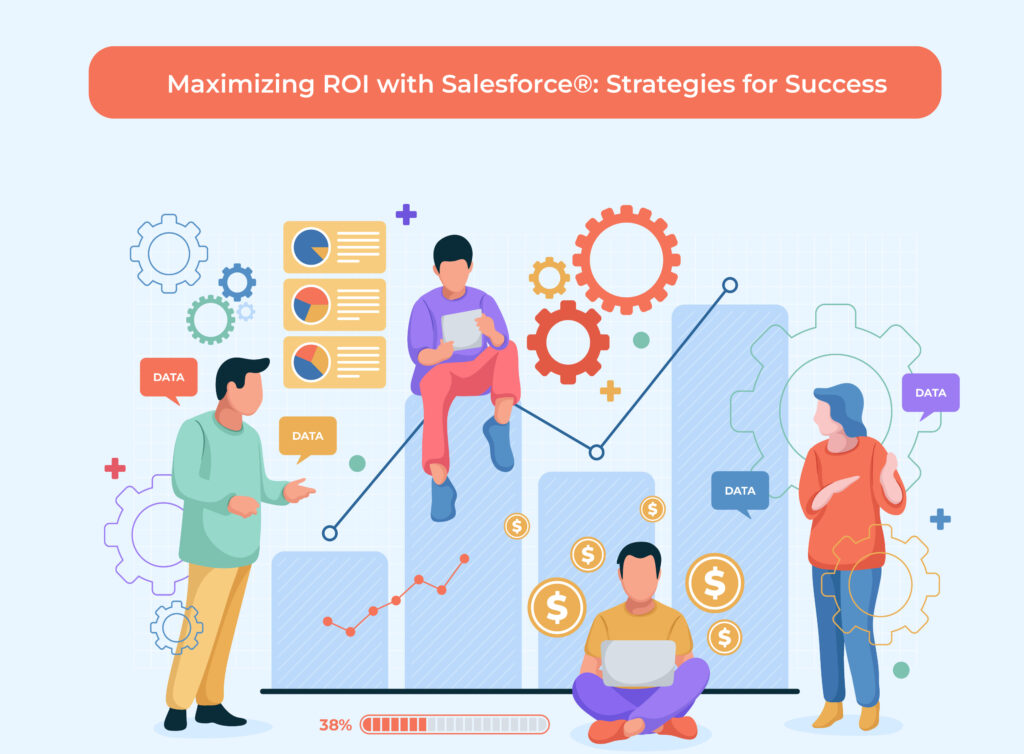Maximizing ROI with Salesforce®: Strategies for Success

Salesforce is a powerful customer relationship management (CRM) platform that can help organizations streamline their operations, improve customer engagement, and drive revenue growth. However, to maximize return on investment (ROI) with Salesforce, organizations need to develop a comprehensive strategy that aligns with their business objectives and leverages the platform's full capabilities. In this blog, we will explore strategies for maximizing ROI with Salesforce and help you achieve success.
1. Define Your Business Objectives:
Before implementing Salesforce, define your business objectives and align them with the platform's capabilities. Identify the pain points and challenges in your current CRM process and set clear goals for how Salesforce can address them. Whether it is improving sales productivity, enhancing customer engagement, or gaining better data visibility, establish specific and measurable objectives that align with your business strategy.
2. Leverage Salesforce's Capabilities:
Salesforce offers a wide range of functionalities and features that can help organizations achieve their business objectives. However, many organizations underutilize Salesforce and fail to leverage its full capabilities. Explore Salesforce's vast ecosystem, including its AppExchange marketplace and integration capabilities, to identify solutions that can enhance your Salesforce experience and maximize ROI.
3. Customize Salesforce to Your Needs:
Salesforce's customization capabilities allow organizations to tailor the platform to their specific business needs and workflows. Take advantage of Salesforce's customization tools, including its Lightning App Builder and Process Builder, to create custom objects, fields, workflows, and dashboards that align with your business processes. Customization ensures that Salesforce is aligned with your business operations and maximizes user adoption and productivity.
4. Ensure Data Quality:
Data quality is a crucial factor in maximizing ROI with Salesforce. Ensure that your data is accurate, complete, and up-to-date by establishing data governance policies and processes. Implement data validation rules, regularly cleanse your data, and establish data quality metrics to monitor and improve data accuracy over time. Clean and accurate data is essential for making informed business decisions and driving revenue growth.
5. Provide Ongoing Training and Support:
Effective training and support are critical for maximizing user adoption and productivity with Salesforce. Offer comprehensive training programs that cater to different user groups, including new hires, experienced users, and managers. Provide ongoing support through a dedicated helpdesk, user forums, or a designated Salesforce administrator who can address user queries, provide guidance, and troubleshoot issues.
6. Establish Key Metrics:
Establishing key performance indicators (KPIs) and metrics is essential for measuring the success of your Salesforce implementation and maximizing ROI. Identify the metrics that align with your business objectives, such as sales pipeline velocity, customer retention rate, or lead conversion rate, and establish benchmarks to track performance over time. Regularly analyze your data and adjust your strategy to optimize performance and achieve your business goals.
7. Continuously Monitor and Improve:
Salesforce is a dynamic platform that evolves with time. Continuously monitor the platform's performance and user engagement metrics to identify areas of improvement. Regularly review your business processes and identify opportunities to optimize workflows, automate manual tasks, and improve data quality. Salesforce's Trailhead program offers ongoing training and resources to help users stay up-to-date with the platform's latest features and enhancements.
Conclusion:
Maximizing ROI with Salesforce requires a comprehensive strategy that aligns with your business objectives and leverages the platform's full capabilities. By defining your business objectives, customizing Salesforce to your needs, ensuring data quality, providing ongoing training and support, establishing key metrics, and continuously monitoring and improving, you can maximize ROI and achieve success with Salesforce. Remember that successful Salesforce implementation is an ongoing journey that requires continuous improvement and optimization to achieve long-term success.
For Latest News & Update
Want Receive the Best Salesforce Insights? Subscribe Now!
We can help you to create your CRM for better business revenue.